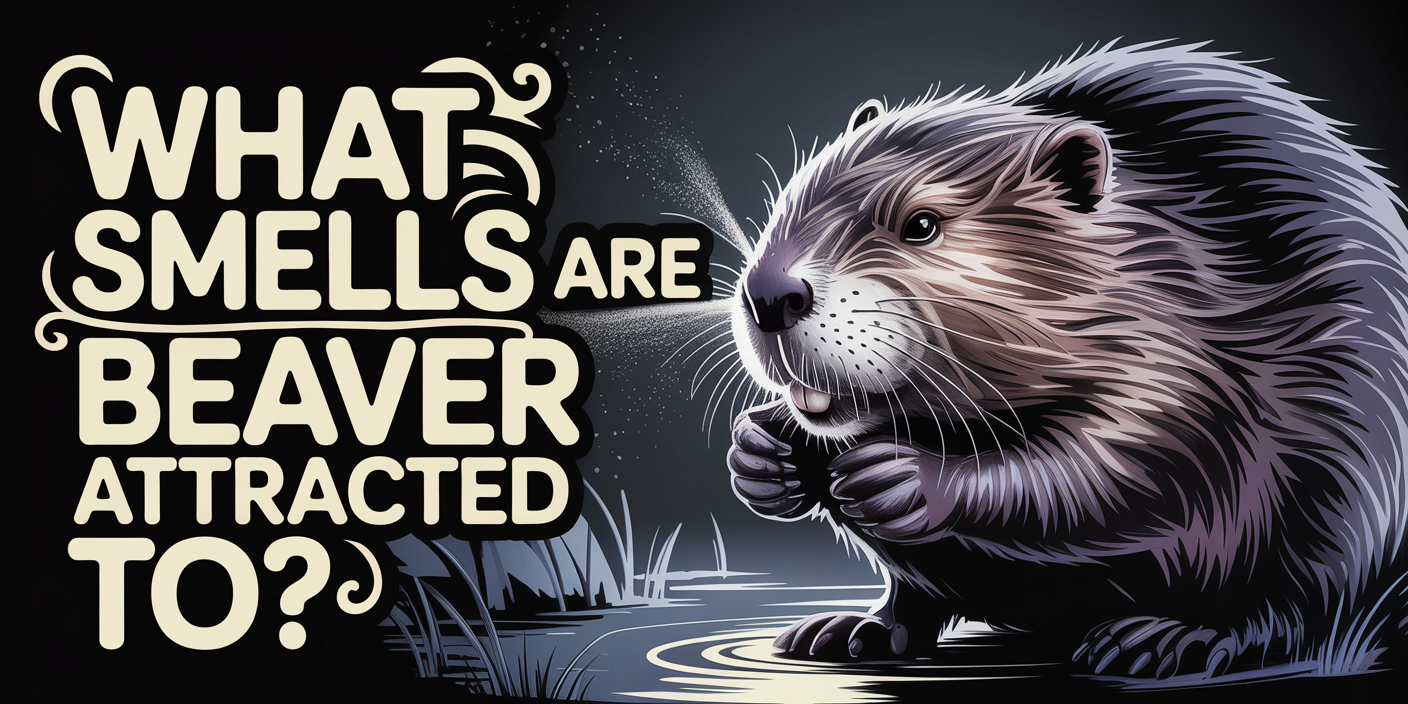“Beavers are most attracted to the scents of freshly cut wood, sweet tree sap, and natural musk like castoreum. These smells signal food, territory, and opportunity, making your yard extra appealing if you’re near a water source. Managing these scent cues is key to keeping beavers at bay in Dallas.”
If you’ve spotted gnawed tree trunks or suspicious little dams forming near your creek in Dallas, you might have a curious, furry visitor on your hands—a beaver. These hardworking rodents are more common in North Texas than most folks realize, especially in areas with slow-moving water like White Rock Creek, the Trinity River, or neighborhood retention ponds. While they might look adorable, beavers can quickly become a nuisance by damaging trees, flooding property, and altering landscapes.
So what’s drawing them in? Believe it or not, it often comes down to smell. Beavers have an incredible sense of smell that guides them to food, mates, and safe territory. In this post, we’re diving into the specific scents that beavers find irresistible—and how that knowledge can help you protect your yard or property from a surprise home renovation by nature’s original engineers.
Learn more: What time of night are beavers most active?
Why Beavers Rely Heavily on Scent
Beavers aren’t just expert builders—they’re also olfactory pros. Their sense of smell plays a huge role in daily survival, from sniffing out food sources to identifying safe spots to build a lodge. They even use scent to communicate with other beavers, marking territory and warning rivals to stay away.
In the wild, scent helps beavers find tender bark, saplings, and plant materials they love to eat. It also leads them to suitable construction materials and ideal environments for dams and dens. Because their noses are so fine-tuned, certain smells can either attract them like magnets or send them packing. Understanding this sensory world is key to managing unwanted beaver activity in the Dallas area.
Smells That Attract Beavers the Most
Beavers are drawn to very specific scents, most of which are tied to food, habitat, or their natural instincts. These smells can unknowingly invite them onto your Dallas property, especially if you live near water or wooded areas.
1. Freshly Cut Wood
Beavers are naturally drawn to the scent of freshly cut wood, especially species like poplar, willow, cottonwood, and aspen. These trees are not only soft and easy to chew, but they’re also prime materials for dam and lodge construction. In areas like Dallas, where these trees grow near lakes and creeks, their freshly exposed scent can act like a signal flare for nearby beavers.
Once a beaver picks up the aroma, it may follow the scent trail back to its source. This behavior often leads them right onto residential properties or greenbelts, especially after recent tree work or landscaping. Even stacked firewood or trimmed branches can become unintentional invitations for these animals.
2. Sweet Tree Sap
Tree sap is one of the most irresistible natural treats for a beaver. When trees are damaged, trimmed, or freshly felled, the sweet, sticky sap that leaks out can act as a powerful attractant. Beavers have a strong preference for the sugary interior layers of softwood trees, and sap leads them straight to this hidden snack.
In the Dallas area, sap from native species like elm or willow can be especially attractive. If your yard has damaged or bleeding trees, there’s a good chance beavers nearby will take notice. It’s an easy way for them to identify food without doing much work.
3. Vanilla Extract
Vanilla extract isn’t just for baking—it’s also a surprising favorite among wildlife trappers. Its strong, sugary scent closely mimics natural sweet smells that beavers associate with sap and fresh vegetation. Because of its wide reach and intensity, just a few drops can lure a beaver from a significant distance.
In fact, vanilla extract is commonly used in beaver bait mixes to increase trap effectiveness. If this scent is present anywhere on your property—from garden treatments to scented sprays—it could inadvertently catch a beaver’s attention and lead it closer to your home or water features.
4. Castoreum
Castoreum is a musky, oily substance produced by beavers themselves. It’s secreted from glands located near their tails and is primarily used to mark territory and communicate with other beavers. This powerful scent tells others that an area is claimed, rich in resources, or ideal for colony development.
Interestingly, castoreum can also attract beavers who are curious or looking to establish new territory. When they detect this scent, they may believe another beaver has already scouted and approved the location, increasing the chances of a visit. Some trappers even use castoreum to mimic active beaver zones.
5. Anise Oil
Anise oil, known for its sharp licorice-like scent, is widely used in wildlife lures—including for beavers. This scent is unfamiliar in a natural sense but oddly appealing to many animals, stimulating curiosity and triggering foraging behaviors. Beavers often respond to it as they would to sweet or fruity smells in the wild.
In practice, a few drops of anise oil placed near water can be enough to draw a beaver in for a closer inspection. Property owners using scented products, sprays, or even herbal garden plants that mimic this aroma could unintentionally encourage beaver visits—especially near creeks or retention ponds.
Why These Scents Matter for Dallas Property Owners
In the Dallas area, where urban development overlaps with natural waterways, it’s not unusual for beavers to show up in unexpected places. If your property is near creeks, stormwater channels, or ponds, the scents we just listed can accidentally turn your yard into a beaver hotspot. Freshly trimmed trees or sapling plantings might be more than just landscaping—they could be ringing the dinner bell for a local beaver.
Once a beaver decides your yard is the perfect location, things can escalate fast. You might notice gnawed tree trunks, small dams forming, or burrows along embankments. These animals are incredibly persistent and will return repeatedly to spots where they’ve found food or shelter. Recognizing and removing attractive scents early can be the difference between a curious visitor and a full-blown backyard construction project.
Smart Ways to Reduce Beaver Attraction
If you want to keep beavers from settling in, managing scent cues is a solid first step. By reducing or eliminating smells they love, you make your property a lot less appealing to these furry engineers. It’s especially important in places like Dallas where beavers are adapting to semi-urban and suburban spaces.
- Trim trees carefully – Avoid leaving freshly cut branches, twigs, or exposed sap near water sources, as these can quickly attract beavers. After pruning or yard work, clean up all clippings promptly, especially from species like willow, poplar, or aspen that beavers love. The fresher the scent, the more likely it will draw attention from nearby wildlife.
- Use tree wraps or fencing – Protect vulnerable trees by wrapping their base with wire mesh or metal hardware cloth. This prevents beavers from chewing the bark and reduces the risk of sap leaking out and attracting them. Make sure the wrap is tall enough—about 3 feet—and buried a few inches into the ground for best results.
- Limit access to sweet-smelling plants – Remove young or tender trees and shrubs away from creek banks or water channels where beavers are likely to explore. If relocation isn’t possible, install sturdy barriers or fencing to prevent access. Even ornamental or fruit-bearing plants can release aromas that catch a beaver’s interest.
- Remove attractant scents – If you’ve used vanilla, anise oil, or any other strong-smelling bait in your yard for other wildlife, clean those areas thoroughly. Use unscented or mildly acidic cleaning solutions to neutralize lingering odors that might act as a beacon. Pay special attention to decks, patios, and low-hanging foliage near water sources.
- Install motion deterrents – Beavers are more cautious than you might think, especially when startled. Motion-activated sprinklers, solar lights, or noise devices can create just enough surprise to discourage them from sticking around. When combined with scent control, these tools make your yard feel unpredictable and unwelcoming to wandering beavers.
Taking these steps won’t guarantee beavers will never visit, but it gives you a head start in discouraging long-term nesting or dam-building behaviors.
How AAAC Wildlife Removal of Dallas Can Help
Beaver problems in Dallas require more than just DIY solutions—especially when dams threaten your landscaping or local drainage. That’s where our experienced team comes in. At AAAC Wildlife Removal of Dallas, we specialize in identifying the signs of beaver activity and taking swift, humane action to protect your property.
We don’t just remove beavers—we assess what’s drawing them in, including scent trails, tree types, and nearby water features. From installing tree guards to safely relocating the animals, our crew handles everything with care, precision, and a deep understanding of local wildlife laws. Whether you’re in Plano, Garland, or anywhere near White Rock Lake, we’re ready to help you reclaim your space from unwanted beaver visitors.
Keep Beavers Away by Controlling the Scents They Love
Beavers follow their noses, and the wrong scents—like sweet sap, fresh wood, or even vanilla—can unintentionally invite them onto your property. In Dallas, where waterways run close to residential areas, that invitation can lead to damaged trees, flooded landscapes, and costly repairs.
Don’t let a curious beaver turn into a persistent pest. If you’re noticing signs of beaver activity or want to proactively protect your land, AAAC Wildlife Removal of Dallas is just a call away. We’ll inspect your property, remove attractants, and safely handle the problem before it escalates.




